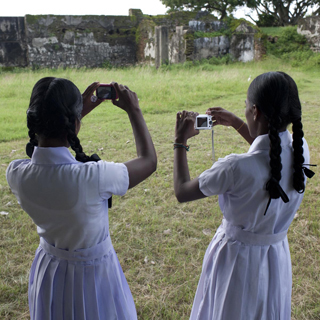by Drew Martin
Butter is an ancient material - thousands of years in the making. The word originates from Greek - bouturon: bous, cow + turos, cheese. Butter has been used not only for food, but also as medicine and as a hair product. Tibetan lamas have used yak butter for hundreds of years as a medium for large-scale and colorful sculptures and facades (pictured left). According to a legend dating back to 641, a Buddha statue was brought for a royal wedding but there were no fresh flowers to adorn it so they were made from butter. I just saw The Iron Lady in the theater, which has a minor butter theme. It is a diet concern, a staple and an economic indicator. It is also a metaphor for the mind...minding the butter and the former prime minister's dementia. The elderly Margaret Thatcher tells the hallucination of her deceased husband, who is having breakfast with her, not to put so much butter on his toast. A young Thatcher (née Roberts) leaves her family's hiding spot during a WWII Luftwaffe air raid to cover the butter in their corner grocery shop. And finally, later in her political career, when one of her party members suggests she is out of touch with the people, she lists a few brands of butter and margarine and how much they cost to prove she is down to earth.



































